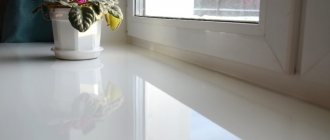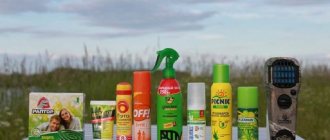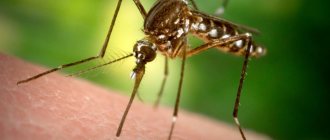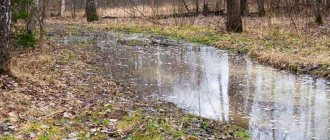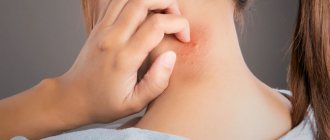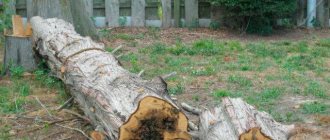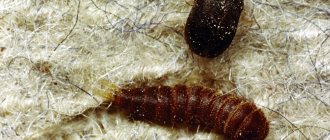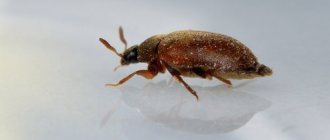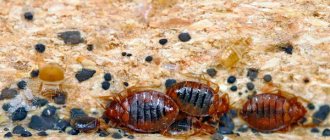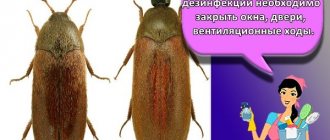Mosquitoes are a real scourge, especially during the warmer months. In some regions, the warm season can last up to six months. All this time, bloodsuckers are active and significantly reduce the quality of life in the territory. For example, in a country house.
To cope with this scourge, there are three options:
Rating: 10 best mosquito repellents
Rating: 10 best mosquito repellents
Even the best spray against mosquitoes and ticks in nature does not always protect against other blood-sucking insects...
netkomaram.ru
Open ›
- Leaving the house less and not paying attention to mosquito bites. This is not always possible. Especially if the house is located next to a forest or pond.
- Use professional pest control products. They are very effective, but require proper handling.
- Apply traditional methods. For example, plant geraniums around the site. It is not only simple, but also aesthetically pleasing. True, it is not as effective as in the case of professional products.
Natural and artificial methods can be combined to achieve better results.
Let's try to figure out which drugs perform better, what traditional methods can be used, what their pros and cons are.
In the apartment
Mosquito nets installed on windows and doors will help keep mosquitoes out of your apartment. However, if the pests do break through, then at home it is much easier to get rid of unwanted biting and annoyingly squeaking insects, because the space is enclosed.
Fumigator Raid
You can quickly and reliably exterminate flying bloodsuckers using a special device - an electric fumigator. The kit includes a bottle of insecticidal liquid containing pralletrin. The device is equipped with an adjustment of the degree of protection and a timer.
Technology for using the Reid fumigator:
- Read the instructions carefully.
- Using the switch, select the continuous operation time of the device - 8 or 12 hours.
- Connect the device to the electrical network - the fumigator is inserted into a regular outlet.
- You can adjust the desired level of protection depending on the number of insects and time of day - from low to high.
- The device will turn itself off after the specified time has elapsed.
- According to the given scheme, it will continue to work every day.
Cost - 300-310 rubles per device with liquid for 30 nights.
Inaday's InaTrap Insect Trap
Innovative insecticidal night light GR-330, operating without chemicals, odors, noise and any harm to the environment. The operating principle is based on the photocatalytic method. Reliably catches all mosquitoes and midges in the room.
The Indias-Inatrap trap works this way:
- The device is installed on a table or bedside table so that it is at a height of 75-80 cm from the floor.
- A light touch turns on the device.
- A soft and pleasant violet light immediately lights up and slight heating and the release of carbon dioxide begins.
- A second touch sets the device to turn off after 12 hours.
- It is best to use the trap at night.
- Mosquitoes fly up to the lamp, are sucked into the flask by the air flow, where they die within 24 hours.
- The container needs to be cleaned from time to time.
How much does it cost: 3450 rubles.
Fumigator REXANT 71-0034
A USB-powered home fumigator with a range of about 30 square meters. Maximum effectiveness is guaranteed by uniform heating of the insecticidal plate. The most important thing is that any replaceable cartridges are suitable for operation of the device.
Application procedure:
- A replacement plate is installed (valid for up to 6-8 hours, after which the cartridge needs to be changed).
- The device connects to the USB port of any device.
- Provides protection from mosquitoes.
- No other actions are required.
- If necessary, simply unplug the device from the outlet.
Price - 225 rubles.
Exterminator EcoSniper GC 1-16
An electrical device equipped with two ultraviolet lamps of 8 W each works effectively over an area of up to 50 m2. The device does not repel mosquitoes, but kills them. Recommended for indoor and outdoor use, provided that protection from precipitation is provided.
Use the EcoSniper exterminator in this way:
- Install on any free horizontal surface or hang on a hook using the chain included in the kit.
- Connected to the electrical network.
- Mosquitoes fly towards the trap in the dark, attracted by the soft blue light generated by heat and carbon dioxide.
- When approaching the mesh or flying through it, the bloodsuckers are struck by an electrical impulse and die.
- When filling the pull-out tray with “insect germabria” it needs to be cleaned.
Cost - 3500-3950 rubles.
Note: Harmless to pets and humans.
The best drugs
According to reviews from specialists and ordinary homeowners, we can mention Cifox, Medilis Cyper, Bioneutral I50 - they are not mentioned in TV advertisements, but they are most often used by professionals.
Cifox
A specialized product that effectively combats mosquitoes, as well as other parasites, including bedbugs and cockroaches. The main component is a 25% solution of cypermethrin (a powerful insecticide). Most often, you can still find a certain fragrance, emulsifier and solvent in the composition, which is why disinfection specialists call it an emulsion.
The drug is in the form of a clear liquid with a yellowish tint and a sharp, specific odor. You can purchase it in volumes of 0.5 or 1 liter. The form of release of the emulsion - bottle, canister - depends on the volume.
Application is carried out in the following sequence: making the solution strictly according to the rules in the instructions - for each liter of water you need to pour at least 4 milliliters of the product. Depending on the size of the area, you need to prepare a sufficient amount - 1 liter of solution is used to treat one hundred square meters of area.
Medilis cyper
The product from a domestic manufacturer is distinguished by its ability to kill mosquitoes not only in open areas of residential areas, but also indoors - apartments, hotels, campsites, etc.
The composition includes, as in the previous version, a 25% solution of cypermethrin. This is a toxic liquid with a transparent yellowish color; when preparing a ready-to-use drug, it acquires a milky tint.
Sold in specialized stores in a bottle of 50 or 500 milliliters, you can also purchase a 5-liter canister. The solution is prepared as follows: you need to take from two to five milliliters of the product and dilute it in 1 liter of water - depending on how dense the vegetation is. Consumption of the drug: 1 liter of ready-made insecticide per 1 hundred square meters.
The price of the drug is approximately 1,534 rubles (0.5 liters).
Sipaz Super
A Russian-made product, produced in the form of a concentrate of 1 liter. Prepare the solution in this way: for every liter of water you need to pour in from three to eight milliliters of Sipaz Super. Each hundred square meters of land requires 1 liter of ready-made solution.
The product should be used as follows: in weather without wind, spray on all plants - bushes, thick grass, lower branches of trees, in addition, you need to treat places where children play - sandbox, swing, hammock, flower bed, lawn, etc.
The active ingredient is 25% cypermethrin. The shelf life of the drug is 3 years after manufacture. The average price is 2250 rubles.
You need to take into account this recommendation: you need to treat areas with the presented solution in the evening, when there are no bees. The drug does not have a negative or detrimental effect on the plant, so there is no risk of damage to honey bees if they land on a flower in the morning on which the insecticide was sprayed.
In addition, you need to take into account the season - it is best to carry out the treatment immediately after the mosquitoes awaken. They most often bother you much earlier than the bees begin collecting nectar.
Agran
The presented substance is diluted with water according to the instructions, after which it is sprayed over the entire area with a constant humid environment. An excellent option for a summer cottage, which is located near water, as well as where there is groundwater flowing near the surface of the earth. In addition, it is suitable for disinfecting trolleys, barrels, ditches, and drainage pits.
The active ingredients are 50 percent chlorpyrifos and 5 percent cypermethrin.
Prepare a solution in a concentration of 2.75 grams of Agran per 1 liter of water. If we talk about consumption, then this is from 50 to 100 milliliters per square meter, in the case of treating a reservoir - 100 milliliters per square meter.
The average cost of the product is 1,700 rubles.
Sinuzan
The active ingredient is 48% chlorpyrifos. The solution is prepared in the following concentration: from two to five milliliters of the drug per liter of liquid. The approximate consumption of the finished product is 100 milliliters per square meter of area.
You can buy it for an average price of 2 thousand rubles.
On the sea
Vacations at the sea are sometimes marred by the appearance of blood-sucking insects that prevent you from enjoying the desired peace and tranquility. You should worry about how to get rid of mosquitoes in advance by choosing the appropriate product.
Aerosol OFF! Extreme
A popular and reliable aerosol that protects against mosquitoes for up to 8 hours when applied to the skin and up to a month when applied to clothing. The active ingredient is DEET. At the same time, it protects against ticks, mosquitoes, fleas, horse flies and other blood-sucking insects.
The aerosol should be used as follows:
- Shake the can vigorously several times.
- Clothing should be processed not indoors, but outdoors from a distance of 20-25 cm, holding things vertically and in the direction of the wind.
- To apply to the skin, the product is first sprayed onto the palm of your hand, and then only distributed, without rubbing, onto open areas of the body.
- The spray does not leave any greasy marks and smells pleasant.
How much does it cost: 150-175 rubles per 100 ml.
Cream ARGUS
Insecticidal cream from a Russian manufacturer that protects against mosquitoes using diethyl-m-toluamide. The product is indispensable for a comfortable holiday near the water and in nature, it has a pleasant consistency and is very easy to apply. Recommended for adults and teenagers.
How to use Argus cream:
- Squeeze the required amount of the drug into the palm of your hand.
- Distribute the product evenly over exposed skin in a thin layer. There is no need to rub it in.
- The insecticidal effect is observed for at least 4-5 hours.
- Continuous protection against mosquitoes can be ensured by repeated application, but not more than 3 times a day.
- Usually insects do not even land on treated areas. But if this happens, then the cream has a negative effect, causing disruption of the nervous system in bloodsuckers.
Price - 35-50 rubles per 42 ml.
Processing with traditional methods
There are three categories of options:
- Plantings.
- Essential oil solutions.
- Smoke.
It so happens that mosquitoes cannot tolerate the smells of some plants. This is mainly due to the high concentration of phytoncides and essential oils. Special substances with a pungent odor. The highest concentrations of natural repellents are found in the following plants:
- marigolds are beautiful and practical flowers with a specific aroma;
- pennyroyal - because it has a very strong smell. you can choose a different variety;
- lavender;
- wormwood, bitter variety;
- basil is not only an effective, but also a pleasant-tasting plant;
- Tansy - small yellow inflorescences with a sharp, bitter odor.
You can use both the plants themselves, in the form of plantings, and their concentrated decoctions with the addition of cinnamon, cloves and other spices. True, in this case you will have to prepare a lot of broth. And this will require a lot of raw materials. This method is not suitable for mass application over a large area.
As for essential oils, these are concentrates. They have a very strong odor and are unpleasant to mosquitoes. Used in the form of solutions. For every 100 ml of water you need to add 3 to 5 drops. A 10 ml bottle will not last long. Therefore, the method is also not universal. It is worth resorting to if the area is relatively small. The following oils are effective for processing:
- citrus fruits;
- citronella;
- tea tree;
- coniferous trees.
And not only.
Smoke can be used to temporarily repel insects. They especially don't like the scent of alder.
2 best folk remedies for mosquitoes in 2022
Carnation
You can prepare an effective insecticidal agent with your own hands from a well-known spice - cloves. The pronounced tart clove aroma successfully repels flying parasites and interrupts the natural odor of the human body even at a considerable distance.
Recipe for making clove water:
- Pour 250 ml of water into a saucepan.
- Pour 5 g of cloves into it.
- Place on the stove, bring to a boil and simmer over very low heat under the lid for about a quarter of an hour.
- Cool and filter.
- Add a little vodka or any cologne to the broth and mix vigorously.
- Pour the prepared infusion into a spray bottle.
- Spray on exposed areas of the body and clothing.
- Clove infusion works for several hours.
- As soon as the smell weakens a little, the solution is applied again.
Cost: 20-25 rubles per 10 g.
Vanilla
An ancient folk remedy for mosquitoes, which has been used for decades. The pungent smell of vanilla is guaranteed to repel insects; they won’t even come close to the potential victim. The bitter taste of this substance on the skin is also not liked by those bloodsuckers who still risk biting.
Vanilla is used in several ways using available means:
- The contents of the vanilla bag are dissolved in water. Pour the resulting vanilla solution into a spray bottle, then spray clothes and exposed parts of the body.
- Vanillin crystals are mixed with cream, preferably for children, in a ratio of 1:5. The resulting product is applied to the skin.
- Any refined vegetable oil (250 ml) is heated in a water bath. Add a bag of crystalline vanillin and mix thoroughly until completely dissolved. Apply a thin layer to exposed areas of skin, making sure that clothing does not get dirty.
How much does it cost: 10 rubles for 1 sachet of 2 g.
Smoke bombs and spiral fumigators
Spirals
Used to fight bloodsuckers in small areas. They are placed near gazebos or in other places where bloodsuckers should not be. They set it on fire and are satisfied with the result. While the spiral is smoldering, insects do not fly up. The main thing is to carefully monitor the source of potential fire and place it correctly.
Spirals are made from parts of dried pyrethrum. A special perennial plant that is not tolerated by mosquitoes.
Smoke bombs
Basically, the active ingredient of most smoke bombs on the market is the same cypermethrin in different concentrations. The principle of operation is the abundant release of toxic smoke for several minutes, which settles on the surface, destroying and repelling insects. Thus, with the help of one or several checkers (depending on the size and concentration), you can treat from 50 to 500 m2 of territory.
Read more about mosquito smoke bombs in our previous article.
Varieties
Entomologists count more than 3,000 species of mosquitoes and classify them into several large groups:
- Common (squeaker) . The most common type. An adult specimen measures 3-8 mm. Bloodsuckers include female squeakers - they require blood components to breed offspring. And males feed on plant juices. Squeakers are carriers of serious diseases such as eczema and meningitis.
- Centipede (karamora) . They live in areas of high humidity, near water bodies and swamps. Individuals are large in size - about 4-8 cm in length. Karamors are safe for humans, but they cause great harm to garden plants. Centipede larvae actively eat tender plant roots and destroy young seedlings.
. Carriers of dangerous malarial plasmodia - the causative agents of malaria. In appearance, Anopheles is similar to ordinary mosquitoes, the difference being the increased size of the hind legs. They live in areas located near water bodies.
Malarials (Anopheles)- Two-lined biter . A small insect, common in almost all climatic zones. The main difference is the bright white stripes on the limbs and body. Individuals are carriers of deadly infections.
- Winter (chionei) . They are slightly similar to long-legged mosquitoes and have a length of 10-12 mm. They can be encountered all year round, even during the cold winter months. Their habitats are damp caves, half-rotten trees, rotten stumps, etc.
- Bolotnitsa (meadow) . These insects are not “bloodsuckers”; they feed only on plant juices and nectar. Meadowworts live in mossy forests, water meadows, and swampy areas.
- Dergun (bell) . Insects that are harmless to humans live only 3-5 days in reed thickets near ponds and shallow rivers and swamps. They are distinguished by their greenish-yellow color and elongated limbs. The main food is plant components.
Mosquitoes are the oldest inhabitants of our planet.
They live on it for more than 150 million years. The growth of the population of parasitic insects is facilitated by the abundance of places attractive for reproduction. Mosquitoes actively breed in stagnant, sun-warmed water, rich in organic matter. Any small garden pond, irrigation barrel, or even a rusty tin can with rainwater becomes an excellent place for the parasite to accumulate.
Where do forest ticks live and hide?
For the most part, ticks watch for victims on paths, sitting in the grass, or near a forest path. In a pine forest, where there is much less moisture than in deciduous forests, ticks practically do not live.
The fact that ticks prefer warm places for settlement also proves their dominance:
- in barns where grain is stored;
- apartments;
- private houses;
- dachas
You can come across forest ticks anywhere in the world. The territory of all natural zones is suitable for their life process, regardless of the continent, climatic conditions and temperature regimes.
A place densely overgrown with grass, which does not inspire confidence from the outside, may turn out to be completely safe, and vice versa, a tidied and landscaped park can be densely populated with ticks and become really dangerous. Installed benches and trimmed grass do not guarantee the absence of ticks and the fact that tick-borne encephalitis does not attack.
There is a common belief that ticks live in trees, waiting for their victims and from above, they rush at them from the branches.
But this is only a widespread fiction that has no resemblance to reality.
Ticks live in grass very close to the ground. Tick larvae are located in the grass at a height of 30 centimeters to one meter. The ticks themselves prefer to sit on the inside of plant leaves next to footpaths and animal paths. They cling to everyone who passes by this plant and touches it.
Typically, the tick bites adults on the lower part of the body:
- legs;
- buttocks;
- groin.
Children are mostly bitten on the head and neck. Also, both adults and children are bitten by ticks on the arms and torso.
A mosquito bit me: what to do?
If you notice redness, slight swelling, or even a blister, the skin in which is terribly itchy, then most likely you have been bitten by a mosquito. We unbearably want to scratch the bite site, saving ourselves from pain and itching, but after scratching everything only gets worse: the skin turns even redder, blood may appear, and an unsightly mark will remain on the scratched area for a long time.
It's best not to scratch the bite area as this may cause more problems.
What to do if a mosquito bites you?
- Itching is perfectly relieved by fresh onion juice, aloe juice, lemon, dandelion leaves, as well as by applying plantain or parsley.
- A saturated solution of table salt will also protect the bite site from the desire to scratch it and redness.
- Ammonia, vinegar solution, soda - what you can use to wipe the bite area.
- You definitely need to treat the areas that you have already combed with brilliant green.
- If the itching does not stop, you should use allergy medications and immediately visit a doctor.
If you notice a mosquito bite, it is recommended to use ammonia, vinegar, soda and other means that can be easily found, perhaps, in every home
Treatment of the area from ticks on your own - step-by-step plan
As spring days approach, city residents move to their plots outside the city.
Unfortunately, in recent years, suburban areas have become objects of increased danger for both humans and pets. In suburban areas there is a high probability of being bitten by ticks.
Waking up from a long sleep they are especially dangerous.
Taiga ticks pose a great threat to people. These arthropods belong to the species Ixodes and are carriers of the infection.
The most dangerous ticks for animals are those that belong to the Dermacentor species and are carriers of piroplasmosis infection and other serious infectious diseases.
Professional approach
The use of the above-mentioned insecticides is considered a professional measure for treating open areas against mosquitoes and other insects. But we must remember that flying mosquitoes are not the main problem, since there are mosquito larvae and eggs on the site, the destruction of which is an equally important task.
It is because of this that specialized pest control services use strong and effective techniques. The most effective of them is the use of a generator, which is possible only by the appropriate services.
This method involves the use of insecticides as a cold/hot fog - their main feature is a longer period of residence of the poison in the air, thereby increasing the time of exposure to mosquitoes and pests. on average, the approximate cost of this type of processing will cost owners up to two thousand rubles.
Who is threatening us?
In recent decades, the species diversity of winged bloodsucking insects in central Russia has increased significantly. Today the list of hostile creatures includes the following species.
- Squeaky mosquito and other types of mosquitoes. In this insect, only females experience a craving for human blood during the period of egg maturation. They need the protein-rich liquid to bear offspring. One female mosquito can attack a person up to eight times a night. During the day they hide in the cool shade, since they cannot tolerate temperatures above 28 degrees, and at dusk they fly out to hunt. When searching for a person, they focus on the heat emitted by the body and the smell of sweat.
- Midge. If mosquitoes have adapted to living even in megacities, then the midge prefers the banks of rivers and lakes. It is easily distinguished by the small size of its round and rigid body, as well as its wide oval wings. The bite is extremely painful, and the wound does not heal for a long time, because the midge does not pierce the skin with its proboscis, but bites off a small piece of skin and licks off the protruding blood. The consequences of the bite are quite unpleasant: the toxin contained in the saliva causes extensive swelling, and in some people, a severe allergic reaction.
- Midlings. In terms of body structure, these insects are similar to mosquitoes, but their sizes are very small - the body length barely reaches 2.5 mm. This allows midges to land on the mosquito net and crawl through the mesh to get into the room. Bites can cause symptoms of general toxicosis: a person’s temperature rises, weakness and nausea appear.
- Mosquitoes. Fortunately, these bloodsuckers are thermophilic and are rarely found north of the Krasnodar Territory. Small insects, the length of which does not exceed 3 mm, are carriers of a number of infectious diseases. At the site of the bite, a person develops severe itching, and dermatitis often develops.
The reproduction cycle of all of these species is associated with water in which the larvae develop. Therefore, in areas remote from bodies of water, the danger of being bitten is significantly less high than on the banks of rivers, lakes and ponds.
